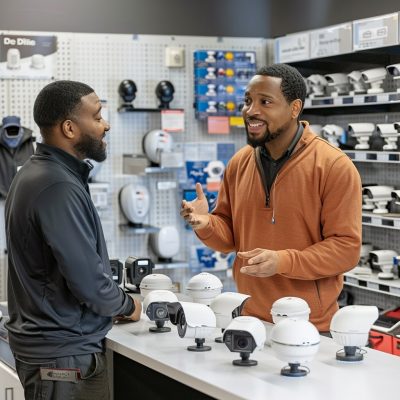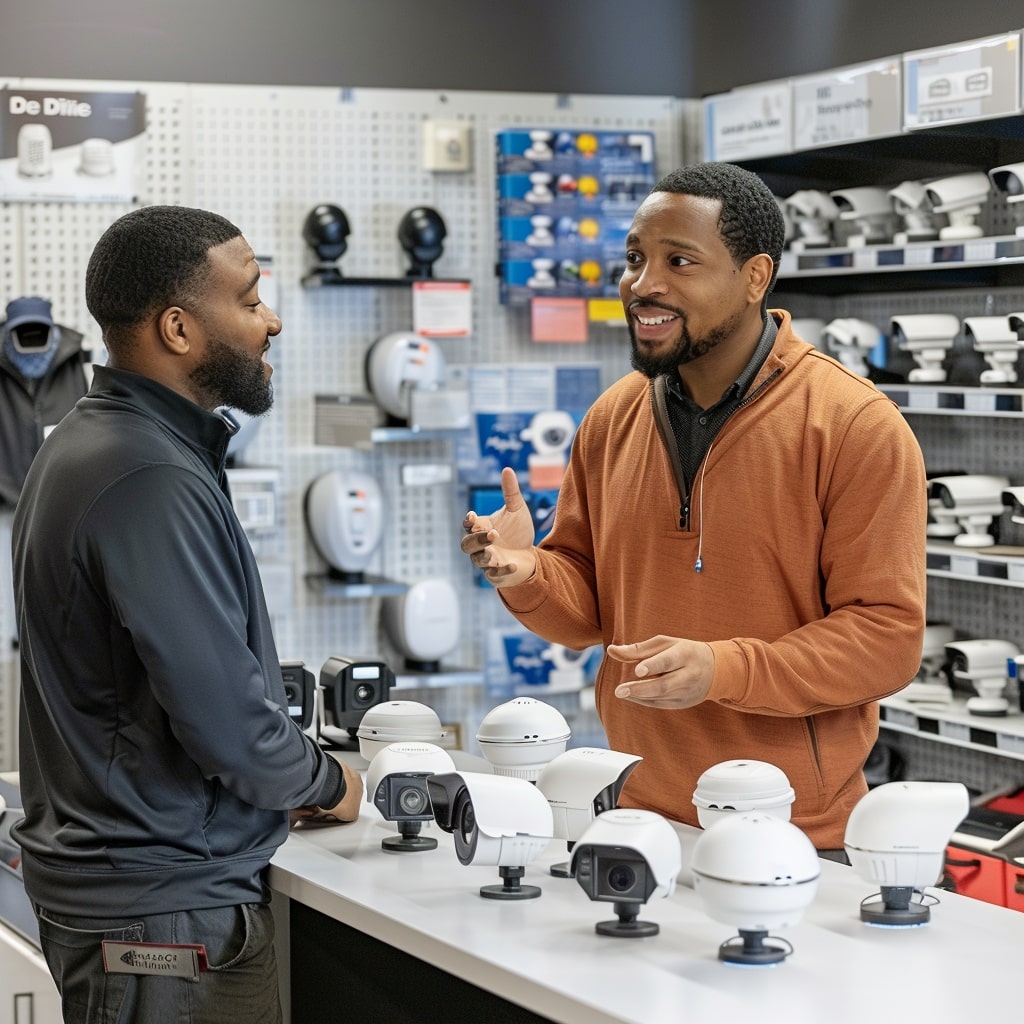Table of Contents
Table of Contents
Selecting the appropriate security camera connections is pivotal for establishing a dependable and efficient video monitoring system. This guide explores 11 different security camera connection types, highlighting both wired and wireless options, ensuring your setup meets both current and future security requirements.
What are security camera connections?
Security camera connections are the crucial links between cameras and monitors, recording devices, and networks. They are essential for the transmission of video and, in some cases, power and audio across a video monitoring network. These connections include both tangible cables and wireless technologies, forming the backbone of any security system.

Wired vs. wireless security camera connections
Wired connections boast superior reliability and video quality, crucial for remote monitoring accuracy. They ensure a stable connection but may require complex installation. On the other hand, wireless connections offer more flexibility in placement and are suitable where physical wiring is challenging. However, they might suffer from signal interference and usually still need an independent power source.
11 types of security camera connections to consider
It’s vital to choose the right connection based on technical needs and environmental conditions. Here, we break them down into wired and wireless categories for simplicity.
Nine wired security camera connection types:
- BNC connectors
- CVBS
- Fiber optic
- HDMI
- PoE (Power over Ethernet)
- RCA
- S-Video
- TVI (transport video interface)
- USB
Two wireless security camera connection types:
- Radio
- WiFi
BNC connectors
Originally introduced in the 1950s for analog systems, BNC connectors provide secure SD connections and are still prevalent in many setups, despite being seen as somewhat outdated. They require a separate power cable for operation.
Read more about the history of CCTV systems.
CVBS
Standing for composite video baseband signal, CVBS is an older standard used mainly with analog cameras, offering SD video quality and necessitating an additional power source.
Fiber optic connections
Fiber optic technology represents a modern approach for high-speed, long-distance data transmission. It’s suitable for both analog and IP cameras, facilitating high-definition video in advanced security systems.
HDMI connections
HDMI is the go-to for HD and 4K video in contemporary systems, connecting DVRs to monitors seamlessly, making it a staple in high-definition setups.
Here’s how to connect your security cameras to a monitor without a DVR.
PoE (Power over Ethernet)
PoE technology simplifies installation by powering IP cameras and transmitting data over a single cable, reducing clutter and enhancing system integration.
RCA connections
RCA connections, though older, are occasionally used for audio and lower-quality video links in some security systems.
S-Video
Introduced in the 1970s and now largely obsolete, S-Video offered an improvement over CVBS but has been surpassed by newer technologies.
TVI (transport video interface)
TVI technology supports HD video over coaxial cables, ideal for upgrading existing analog systems to HD without replacing the infrastructure.
USB connections
USB connections are less common in traditional security setups, typically used for smaller, portable cameras or direct computer connections, and are not typical in business environments.
Radio
Radio connections, less reliable than wired options, are used where cabling is not feasible. They’re mostly associated with older analog systems and require external power.
WiFi
WiFi provides a wireless solution for IP cameras, allowing for flexible installation, although it can be prone to interference and also needs a separate power source.
Enhance your security with Solink
Choosing the right security camera connections is crucial for a robust security system. Integrating these connections with Solink’s cloud-based solutions not only bolsters security but also offers advanced monitoring capabilities and invaluable insights.
Leverage Solink to bridge your security cameras with the cloud, creating a dynamic, intelligent security system that melds physical reliability with cloud-based adaptability.

